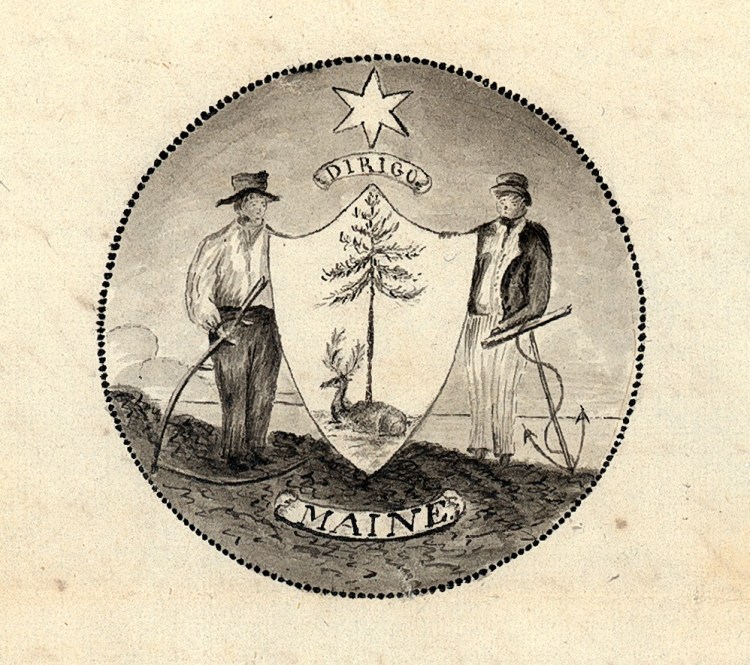June 9, 1820: The Maine Legislature adopts the design of the state seal about three months after Maine becomes the 23rd state.

Designed by committee – a foreboding circumstance in itself – the image shows a farmer resting on a scythe and a seaman leaning on an anchor, with a moose and a pine tree gracing a shield in the middle. The North Star, an allusion to the fact that Maine is the northernmost state at that time, is fastened at the top, like an angel on a Christmas tree. The Latin word “dirigo,” meaning “I direct” or “I guide,” hangs under the star.
The design does not meet with universal approval, and for more reasons than the fact that the “moose” looks like a deer.
One committee member expresses disappointment that the aurora borealis and a quote from St. Paul, “I saw in the way a light,” could not have been shoehorned into the existing menagerie of parts.
Historian William D. Williamson, a former governor, writes about the seal in 1832 that although some kind of state symbol was needed urgently for use on official documents, “no part of it was very ingeniously wrought or executed; hence people of taste and judgment have not been altogether pleased with the devices, or emblems.”
The seal undergoes revision from time to time throughout the 19th century, but those revisions always incorporate the elements prescribed in 1820.
Finally, in 1919, the Legislature approves the version used today, and the state moves on to more pressing matters, such as selecting an official state bird, tree, flower, song, soft drink and treat.
Presented by:

Joseph Owen is an author, retired newspaper editor and board member of the Kennebec Historical Society. Owen’s book, “This Day in Maine,” can be ordered at islandportpress.com. Joe can be contacted at: jowen@mainetoday.com.
Send questions/comments to the editors.



Comments are no longer available on this story